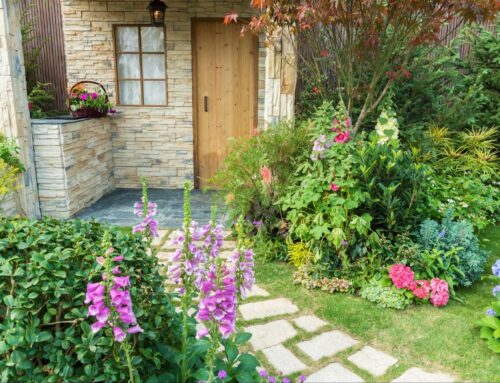Is your home green? I am not talking color, I am referring to energy efficiency. Many newer homes are proudly described as having “green features”. It makes the homeowner sound like a champion for saving energy and being environmentally minded! Well, if your home doesn’t happen to be new or energy efficient, there are still ways in which you can make your home green-ish!
Laundry……don’t wash your clothes every day. Let that dirty smelly pile sit for a few days…..(hopefully in a closed closet)! It turns out that leaving last week’s towels and yesterday’s gym clothes in an ever growing pile for days makes good green sense. That’s because cleaning a small load of dirty clothes in the washing machine is a huge waste of water. Each cycle uses more 25 gallons, whether or not it’s full or not.
Don’t rake your lawn! Decomposing grass cuttings are a natural fertilizer, giving lazy lawn owners all the excuses they need to let chopped grass lie, instead of killing their backs raking up the grass and applying a chemical treatment. It’s a good way to replenish the fertility of the soil that the growing grass extracts. From an environmental standpoint, this is far better than adding synthetic fertilizers, which can run off the ground and pollute nearby creeks and other waterways.
House plants……..even if your thumb is not green! I have written about this before….having indoor house plants improves the quality of the air you breath. They purify the air and absorb pollutants emitted into the air. Try a spider plant (for carbon monoxide), ficus (formaldehyde), peace lily (acetone, trichloroethylene, benzene, and formaldehyde), or a Gerbera daisy, red emerald philodendron, or parlor palm (all indoor air toxins).
You can have solar heat…..from keeping your blinds open during cold temperatures. During colder weather, keeping window blinds (and shutters and curtains) open during daylight hours can save an estimated 10% of your home’s energy. This type of passive solar heating allows the home’s heating system to run less frequently and can result in huge savings. In summer, on the other hand, you’ll want to keep them closed when you go out for the day to avoid the dreaded greenhouse effect. Easy, right?
Use your microwave! Zapping a frozen meal for dinner instead of cooking from scratch? You get a green star, although frozen prepared meals don’t get a “green light” from me! Microwaves use 50% less than a conventional oven. These ovens are significantly more energy-efficient than standard gas or electric ovens. Surprisingly, with most gas ovens, whenever that oven is operating and burning gas, it’s also using a lot of electricity. (I am on the fence with this one)!
Soap. Use unscented. Swap out unscented soap, cosmetics, and cleaning products instead of their typical fragrant versions. It may have a huge impact at home. Artificially scented air fresheners, for example, are made with synthetic fragrances that contain phatalates. These are chemicals that can cause hormonal abnormalities, birth defects, and reproductive problems. Also, the chemicals in a single product’s fragrance mixture are among the top five allergens in the world. Look instead for products with scents that are naturally derived, plant-based, or labeled as using essential oils. Switching to a nontoxic deodorant or unscented shampoo might make a big difference in your health.
Switch out your shower heads. The average family of four can use 400 gallons of water every day, according to the Environmental Protection Agency. And with showering accounting for nearly 17% of indoor water use in homes, it’s just using your head to switch to a low-flow shower head.
If you want to take your green ambition a step further you can order an energy audit for your home. It will identify air leakage and other problems that are not only wasting energy and money, but also reducing your comfort. Also a bonus benefit could include free or discounted weatherization services. Frequently free LED (light-emitting diode) bulbs are offered as well—which makes the move a truly bright idea!





